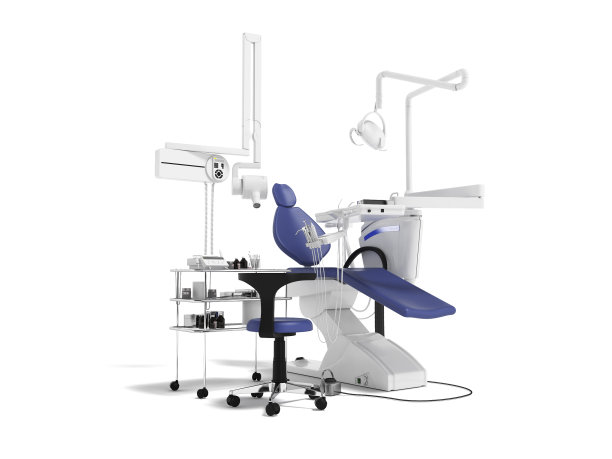Understanding Periodontal Disease Its Impact on Oral Health and Overall Wellbeing with Preventive Measures and Treatment Options
Summary: Periodontal disease, a common yet often overlooked condition, significantly impacts oral health and overall wellbeing. This article explores the nature of periodontal disease, its triggers, and the potential consequences if left untreated. By understanding the importance of oral hygiene, the role of nutrition, and routine dental visits, we can effectively prevent periodontal disease. Additionally, we outline various treatment options available to manage the disease, emphasizing the importance of early intervention. In navigating the nuances of this condition, we aim to empower readers with knowledge while underscoring the interconnectedness of oral health and systemic health.
1. Understanding Periodontal Disease

Periodontal disease primarily includes conditions such as gingivitis and periodontitis, both characterized by the inflammation of the gums. This disease arises from the accumulation of plaque, a sticky film containing bacteria that forms on teeth. As plaque hardens into tartar, it can lead to further infections and eventually affect the supporting structures of the teeth. Understanding the stages of periodontal disease is essential for recognizing its onset and seeking timely treatment.
Gingivitis represents the initial stage of periodontal disease, which causes inflammation and irritation of the gums. Symptoms may include redness, swelling, and bleeding during brushing or flossing. If gingivitis is not treated, it can progress to periodontitis, where the inflammation extends deeper into the connective tissues and bone that support teeth. This progression can ultimately result in tooth mobility and loss.
Research has shown that periodontal disease is not only an oral health issue but also impacts systemic health, being linked to conditions such as heart disease, diabetes, and respiratory diseases. The intricate relationship between oral bacteria and overall health underscores the need for increased awareness and preventive strategies regarding this prevalent condition.
2. Risk Factors and Prevention Measures
A variety of risk factors contribute to the development of periodontal disease. Poor oral hygiene practices leading to plaque accumulation are the primary cause, but other factors such as smoking and genetic predisposition can exacerbate the risk. Furthermore, conditions like diabetes and hormonal changes during pregnancy can influence periodontal health, making it important to consider individual risk profiles in preventive strategies.
Preventive measures are crucial in combating periodontal disease. Maintaining a rigorous oral hygiene routine, including daily brushing and flossing, is vital for removing plaque before it hardens into tartar. Regular dental cleanings every six months ensure professional removal of buildup and help in the early detection of periodontal issues.
Moreover, adopting a balanced diet rich in vitamins and minerals can improve gum health. Nutrients such as vitamin C and calcium play significant roles in maintaining the structural integrity of oral tissues. Lifestyle changes, including quitting smoking and managing chronic health conditions, further enhance an individual’s ability to prevent periodontal disease.
3. Treatment Options Available
If diagnosed with periodontal disease, several treatment options are available, often depending on the severity of the condition. Initial treatments typically include professional dental cleanings to remove plaque and tartar buildup. This is often referred to as scaling and root planing, a deep cleaning procedure aimed at minimizing infections and facilitating gum healing.
In more advanced cases of periodontal disease, surgical interventions may be necessary. Procedures such as flap surgery allow dentists to access and clean deeper tissues and reduce gum pockets. Bone grafts can also be utilized to regenerate lost bone tissue surrounding teeth, promoting stability and health in the long term.
For patients struggling with persistent periodontal disease, advanced therapies such as laser treatments or antimicrobial mouth rinses can be effective as adjuncts to conventional treatments. These options help in targeting bacteria and supporting the healing process, illustrating the importance of tailored treatment plans based on individual needs and progress.
4. The Importance of Regular Dental Visits
Regular dental check-ups play a pivotal role not only in the prevention of periodontal disease but also in the management of those already affected. These visits enable dentists to identify early signs of gum disease, such as inflammation or pocket formation, which might go unnoticed by patients. The proactive approach intervention can significantly alter the trajectory of oral health.
During dental visits, professionals provide personalized advice on proper brushing and flossing techniques, dietary recommendations, and lifestyle changes to support gums health. Moreover, dentists can help track the effectiveness of any prescribed treatments or home-care practices, ensuring patients remain on course for optimal oral health.
Additionally, understanding the broader relationship between oral health and overall wellbeing emphasizes the importance of these visits. By maintaining regular appointments, individuals not only safeguard their gum health but also contribute to their overall quality of life, showcasing the necessity of integrated health management.
Summary:
Periodontal disease poses a significant threat to both oral health and general wellbeing, making understanding its intricacies essential. With awareness of risk factors and adherence to preventive measures, many individuals can avoid the onset or progression of this condition. Treatment options ranging from basic cleanings to advanced surgical procedures empower patients in their journey toward optimal oral health.
This article is compiled by Vickong Dental and the content is for reference only


